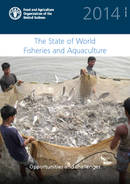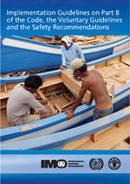出版物
The document shows that there has been a major success in the World Trade Organization (WTO) with the addition of 31 new members. This has contributed to lower tariffs for seafood trade.
Among the founding members of the WTO, many have considerable "water in the tariffs" and the legal option of raising their most-favoured nation (MFN) applied tariffs. The analysis shows that most countries have not used this option; there has been no protectionist backlash for...
This technical paper compiles the state of knowledge on seafood safety and quality with the aim to provide a succinct yet comprehensive resource book to seafood quality and safety managers, including topics on emerging issues such as new pathogens, the impact of climate change on seafood safety, and the changing regulatory framework.
After introductory chapters about world fish production, trade, consumption and nutrition, and about the developments in safety and quality systems, the technical paper devotes...
Aquaponics is a symbiotic integration of two mature disciplines: aquaculture and hydroponics. This technical paper discusses the three groups of living organisms (bacteria, plants and fish) that make up the aquaponic ecosystem. It presents management strategies and troubleshooting practices, as well as related topics, specifically highlighting the advantages and disadvantages of this method of food production. This publication discusses the main theoretical concepts of aquaponics, including the nitrogen cycle, the role of bacteria, and the...
Fisheries and aquaculture play a vital role in achieving FAO’s Strategic Objectives of eliminating hunger, food insecurity and malnutrition. As reported in this edition of The State of World Fisheries and Aquaculture, people have never consumed so much fish or depended so greatly on the sector for their well-being as today.
As the demand for fish increases, the sector is also striving to be more productive and sustainable and to enable more inclusive and efficient systems...
The Implementation Guidelines are intended for the attention of maritime, labour and fisheries ministries and any other relevant government ministry as and when it is decided to implement the three FAO/ILO/IMO instruments on the design, construction and equipment of fishing vessels of all types and sizes. Those instruments are Part B of the Code of Safety for Fishermen and Fishing Vessels, the Voluntary Guidelines for the Design, Construction and Equipment of Small Fishing Vessels, and the...






